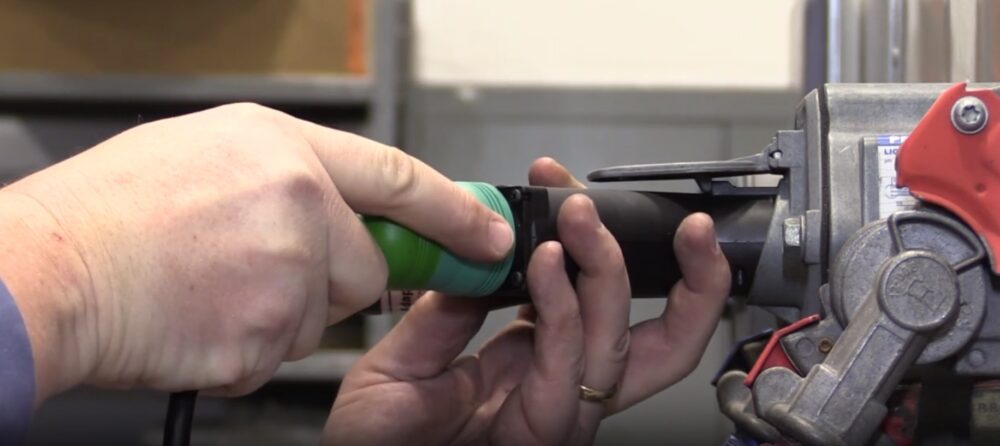By Glen Beanard
Contributing Writer
In the modern-day automobile, the battery serves three main functions. First is the obvious: It supplies electrical power to the ignition system, starter, computer system and every other electrical component while the engine is not running (or any other instance when the alternator is not charging). Second, it serves as a reserve power source should electrical demand exceed that of what the alternator can produce.
Thirdly, it acts as a damper, or stabilizer, for electrical pulses. It absorbs high voltage spikes and fills in between moments of low voltage. That action helps to smooth out electrical ‘noise’ in the system. Without that electrical dampening action, delicate electronic components could be at risk of damage from electrical spikes.
Electricity 101
Before we getting into details about vehicle batteries, we first need to cover a few basics. For example, we must define some commonly used terms – electricity, amperage, volts and resistance.
The first – electricity – is, ironically, the most difficult one to grasp because it actually has more than one definition. For the scope of this article, the definition will be “a supply of atoms with excessive electrons.” Therefore, the flow of electricity is the exchange of electrons from one atom to the next.
The terms “amperage” (amps) and “voltage” are used to measure that exchange. Amperage is a measurement of quantity, whereas voltage is a measurement of pressure. Some atoms are more willing to share their electrons than others. Materials that are made out of atoms that freely pass along electrons – like metal and water – are referred to as “conductors.” Some materials – like rubber, air and plastic – consist of atoms that don’t share their electrons as easily. Those materials, for the scope of this article, are referred to as “insulators.” A conductor has a lower resistance than an insulator.
Amps, volts and resistance are connected to each other in terms of effect. Picture a generic roadway, in which the speed limit represents voltage, and the number of vehicles on the road at the same time represents amperage. The number of potholes on the road’s surface represents resistance.
If you were to stand at the edge of that road and count the cars as they passed by, you would count more over a minute’s time if they all sped up, right? In most cases, if you increase the volts (speed limit), you will increase the amps (number of cars) that pass through the wire (roadway). If you add resistance (potholes), the volts (speed) and amps (quantity) will be reduced.
However, there are some exceptions. Just because the cars are moving faster doesn’t mean there will always be more. They can have gaps between them. The same is true for electricity. Just because there are 12 volts doesn’t mean there will automatically be a lot of amps available. Keep that in mind, as much electrical testing depends on that knowledge. Since 12-volt car batteries all have the same ‘speed limit,’ they are rated by CCAs (cold cranking amps). The number of amps that a battery can deliver at 70°F/26°C is called the battery’s CCA rating.
How and Why It Works
I’m sure most of us have defined a battery to our customers as a storage unit, much like a glass of water. That definition may be fine for consumers; however, for technicians, a more in-depth explanation is required.
A car battery is actually more of a little electric generator than a cup. It stores energy in a chemical form then transforms that stored chemical energy into electrical energy on demand. A lead/acid battery contains two different types of lead plates, submersed in an electrolyte, to make this possible. Lead dioxide is the material used to make the positive (+) plates. The negative (-) plates are made from sponge lead. The plate is actually a lead alloy mesh grid (used as a framework) with lead oxide pasted onto it. The paste used for the negative plate has expanders.
The two types of plates are later formed into sponge lead (-) and lead dioxide (+) during the initial charging process after assembly of the battery is complete. The two types of plates are stacked together, but there are separators between them so they do not directly touch each other. However, the separators are porous so that ionic current can flow between the plates.
 The assembled plates and separators form an element. Each element has two connectors – one for positive and one for negative. The elements are lowered into the battery case, where they have their own divided cell space and are submersed in electrolyte, a mixture of water and sulfuric acid. They don’t rest directly on the floor of the case; rather, they rest on a honeycomb of plastic walls molded in the bottom of the case. The elements are wired to each other by their appropriate polarity connector using straps. The straps are joined with the appropriate terminal post of polarity.
The assembled plates and separators form an element. Each element has two connectors – one for positive and one for negative. The elements are lowered into the battery case, where they have their own divided cell space and are submersed in electrolyte, a mixture of water and sulfuric acid. They don’t rest directly on the floor of the case; rather, they rest on a honeycomb of plastic walls molded in the bottom of the case. The elements are wired to each other by their appropriate polarity connector using straps. The straps are joined with the appropriate terminal post of polarity.
All of these elements are necessary for the battery to function, and all of the materials, even the water used in the electrolyte, are depleted over time and through use.
During the discharge half of the cycle, sulfate from the electrolyte bonds with the positive and negative plates to form a layer of lead sulfate. Also, the oxygen in the positive plate combines with hydrogen in the sulfuric acid to form water. It is during this chemical reaction that electricity is produced. As both plates become lead sulfate, the performance of the battery is reduced.
It is also important to understand that the chemical reaction can only take place on the surface of the plates where the electrolyte comes in direct contact with the plates. Since the acid is replaced by water during the discharge, the performance of the battery will decline over time. However, you will notice that the battery bounces back after the load is removed and stronger electrolyte can circulate and come in contact with the plates again.
Recharging the battery causes the sulfate to leave the lead and reform with the electrolyte. One discharge and recharge together form one cycle. The plates and the electrolyte undergo some permanent changes during the cycle, so not everything can be restored through simply recharging. During recharge, hydrogen gas is released at the positive plates, and oxygen is released at the negative plates. These gasses were previously elements that made up the parts of the battery, and some of them are vented out. Obviously, such a cycle can only occur a limited number of times before some of the elements are depleted.
It’s also important to note that both hydrogen and oxygen are highly explosive. Care must be taken when handling a battery to ensure that sparks are not created. Never remove the vents to charge a modern battery. Modern batteries have special vent designs that reduce the chance of explosion.


